Gardenia cultivation methods and precautions
Gardenia, also known as yellow gardenia and white toad flower, is an evergreen shrub or small tree of the Rubiaceae family. It is native to central China and is now widely cultivated throughout the country.
To grow gardenias at home, you must master their physiological characteristics to make their leaves, flowers, and fruits beautiful and improve their ornamental value.
Soil. Gardenia likes to grow in acidic soil with more humus. It can be mixed with 4 parts of leaf humus, 4 parts of vegetable garden soil, 1 part of soybean meal (mature) and 1 part of river sand. It should have good water permeability and air permeability, and then add 0.5% of black alum or sulfur. 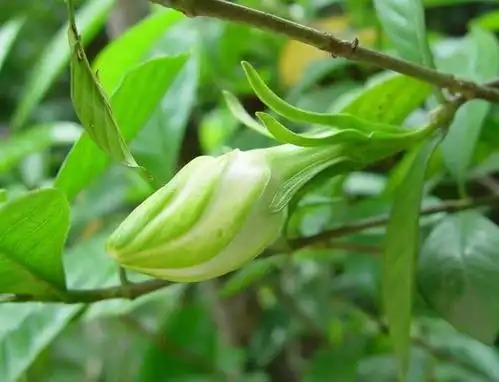 Temperature. The best growth and development temperature for gardenia is 20-25℃, and the suitable temperature for flowering is 26-28℃. Plants cultivated for 4-5 years can tolerate short-term low temperatures of -3℃. They will suffer frost damage below -5℃, with leaves turning black and falling off, and young branches freezing to death. It is advisable to maintain indoor maintenance at 6-10℃ in winter, and the minimum should not be lower than 0℃. If the room temperature is above 15℃, the south-facing doors and windows should be opened for proper ventilation to lower the temperature, otherwise it will easily cause germination, and will be harmed by low temperatures, which is extremely unfavorable for growth and flowering in the following year.
Temperature. The best growth and development temperature for gardenia is 20-25℃, and the suitable temperature for flowering is 26-28℃. Plants cultivated for 4-5 years can tolerate short-term low temperatures of -3℃. They will suffer frost damage below -5℃, with leaves turning black and falling off, and young branches freezing to death. It is advisable to maintain indoor maintenance at 6-10℃ in winter, and the minimum should not be lower than 0℃. If the room temperature is above 15℃, the south-facing doors and windows should be opened for proper ventilation to lower the temperature, otherwise it will easily cause germination, and will be harmed by low temperatures, which is extremely unfavorable for growth and flowering in the following year. 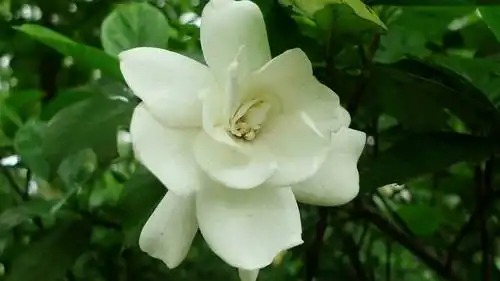 Light. Gardenia likes sufficient sunlight, especially in spring and autumn. It needs more than 8 hours of sunlight every day, otherwise it will be detrimental to its growth and development and wintering. Avoid strong sunlight exposure at noon in summer, otherwise the leaves will turn yellow. It should be placed in a diffuse light place for maintenance, and the light transmittance should reach 40-50%. In winter, place it in a south-facing place with direct sunlight indoors.
Light. Gardenia likes sufficient sunlight, especially in spring and autumn. It needs more than 8 hours of sunlight every day, otherwise it will be detrimental to its growth and development and wintering. Avoid strong sunlight exposure at noon in summer, otherwise the leaves will turn yellow. It should be placed in a diffuse light place for maintenance, and the light transmittance should reach 40-50%. In winter, place it in a south-facing place with direct sunlight indoors. 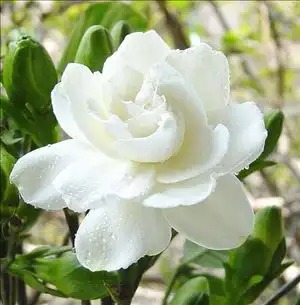 Fertilization. Gardenia is not a flower that likes fertilizer very much, but because it grows vigorously and is limited by the nutrients in the pot soil, it needs reasonable fertilizer supplementation during the growth period. Apply decomposed human feces or cake fertilizer once every 10 days or so. Stop watering one day before fertilization, and water it thoroughly once on the day of fertilization. Stop fertilizing from mid-September. For adult plants, apply sesame paste residue once in mid-June and mid-August, 0.5-1 liang each time, crush it and mix it thoroughly with the topsoil.
Fertilization. Gardenia is not a flower that likes fertilizer very much, but because it grows vigorously and is limited by the nutrients in the pot soil, it needs reasonable fertilizer supplementation during the growth period. Apply decomposed human feces or cake fertilizer once every 10 days or so. Stop watering one day before fertilization, and water it thoroughly once on the day of fertilization. Stop fertilizing from mid-September. For adult plants, apply sesame paste residue once in mid-June and mid-August, 0.5-1 liang each time, crush it and mix it thoroughly with the topsoil. 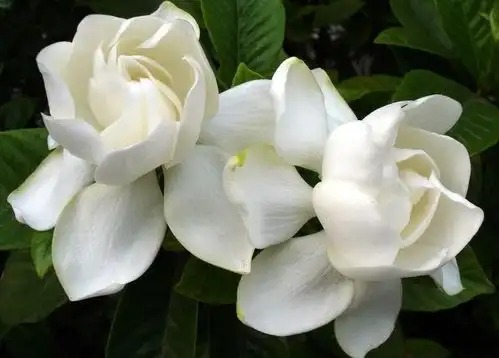 Watering. Gardenia likes a lot of water, and some people call it "water gardenia". In spring, due to the strong winds, dry air and little rainfall, water the gardenia every three days, and sprinkle water around the potted flowers every morning and evening to increase the air humidity. In summer, after the beginning of the dog days, the weather is hot, so water less in the morning and water thoroughly after 2 pm. In summer, soft water is suitable for irrigation, because hard water contains more calcium and magnesium salts, which is very unfavorable for the growth of gardenias. In mild cases, the branches and leaves will turn yellow, and in severe cases, the gardenia will die quickly. In order to overcome the alkalinity of the soil and water, alum fertilizer water should be applied once a week during the growing season to keep the branches and leaves of the gardenia dark green. Watering should be controlled in winter. Do not water unless the soil is dry. Excessive water content for a long time can easily cause root rot and death.
Watering. Gardenia likes a lot of water, and some people call it "water gardenia". In spring, due to the strong winds, dry air and little rainfall, water the gardenia every three days, and sprinkle water around the potted flowers every morning and evening to increase the air humidity. In summer, after the beginning of the dog days, the weather is hot, so water less in the morning and water thoroughly after 2 pm. In summer, soft water is suitable for irrigation, because hard water contains more calcium and magnesium salts, which is very unfavorable for the growth of gardenias. In mild cases, the branches and leaves will turn yellow, and in severe cases, the gardenia will die quickly. In order to overcome the alkalinity of the soil and water, alum fertilizer water should be applied once a week during the growing season to keep the branches and leaves of the gardenia dark green. Watering should be controlled in winter. Do not water unless the soil is dry. Excessive water content for a long time can easily cause root rot and death. 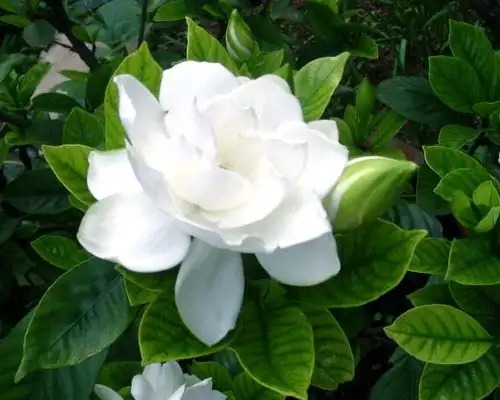 Pinch the top. In order to regulate and control the growth of gardenias, make the plant beautiful and promote flowering, remove the top of the new branches when the vigorous growth will stop in spring, so as to promote the fullness of the axillary buds at the base of the branches and the formation of flower buds.
Pinch the top. In order to regulate and control the growth of gardenias, make the plant beautiful and promote flowering, remove the top of the new branches when the vigorous growth will stop in spring, so as to promote the fullness of the axillary buds at the base of the branches and the formation of flower buds. 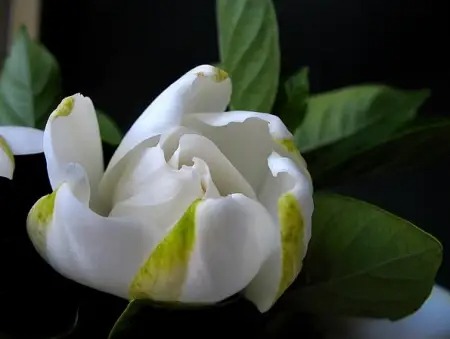 Precautions for gardenias
Precautions for gardenias
Gardenia is often prone to chlorosis, where the leaves turn yellow. Chlorosis is caused by a variety of reasons, so different measures must be taken to prevent and control it. Chlorosis caused by fertilizer deficiency: This chlorosis starts from the old leaves at the bottom of the plant and gradually spreads to the new leaves. Nitrogen deficiency: The leaves turn yellow, and the new leaves are small and brittle. Potassium deficiency: The old leaves turn from green to brown. Phosphorus deficiency: The old leaves are purple or dark red. For the above situations, you can force the application of decomposed human manure or cake fertilizer. Chlorosis caused by iron deficiency: This chlorosis is manifested on the new leaves. At the beginning, the leaves are light yellow or white, and the veins are still green. In severe cases, the veins are also yellow or white, and the leaves will eventually dry up and die. In this case, you can spray 0.2%-0.5% ferrous sulfate aqueous solution for prevention and control. Chlorosis caused by magnesium deficiency: This chlorosis starts from the old leaves and gradually develops to the new leaves. The veins are still green. In severe cases, the leaves fall off and die. In this case, you can spray 0.7%-0.8% boron magnesium fertilizer to prevent and control it. Excessive watering, freezing, etc. can also cause yellow leaves, so special attention should be paid during maintenance.
Key points for gardenia cultivation
The cultivation of gardenia has a long history. In the 17th and 18th centuries, gardenia was introduced to Europe, attracting widespread interest among local gardeners and flower lovers. It was introduced to the United States in the early 19th century. After continuous cultivation, many new varieties of gardenia have emerged, such as double-petal winter-blooming varieties, potted varieties that bloom all year round, varieties specifically for cut flowers, and single-petal and double-petal varieties with yellow and white spots on the leaves.
Gardenia is 1 to 2 meters tall, with pale yellow roots and many branched stems. Single leaves are opposite, with a few whorled 3 leaves, leathery, shiny, oblong, and entire. Stipules are membranous, usually 2 pieces joined into a tube, surrounding the twigs, large, white flowers, with short stalks, fragrant, solitary at the branch ends or leaf axils. Calyx is green, cylindrical, gradually narrowing at the base, with several lobes at the tip, and the tube and lobes are almost the same length. The corolla opens into a high-footed saucer, usually with 6 petals, but also with 5 or 7 petals. The capsule is obovate or elliptical, golden yellow or orange-red when ripe, with 5 to 8 wing-like longitudinal ridges, and 5 to 8 narrow lanceolate persistent calyxes at the top, which are almost equal in length to the fruit body. There are many seeds, oblate, and yellow-white. The flowering period is from May to June, and the fruit ripening period is from November to December.
Gardenia likes moist air and warm climate, and grows better in well-drained, loose and fertile acidic soil. It is shade-tolerant and poorly cold-tolerant, and its leaves will fall off when it is below -12℃. It is often cultivated in greenhouses in North China. It has strong germination and tillering ability, and is resistant to pruning.
Usually, it is propagated by cutting, layering and sowing. Cutting is carried out in the rainy season, when the air humidity is high and the temperature is between 20℃ and 25℃, which is conducive to rooting of cuttings. Cuttings can be cut into 15 cm long branches with 2 to 3 upper leaves, and inserted into the seedbed of loose and permeable sandy soil. The cuttings should be buried 2/3 in the soil, and properly shaded, so that the survival rate is high. The layering method is carried out in early April. Select 2 to 3 years old strong branches and press them into the soil. It will take about 1 month to take root. Cut them off from the mother plant in mid-to-late June and transplant them to the seedbed for management and cultivation. Spring sowing is suitable for sowing and seedling raising, but seedlings bloom later.
Transplanting of seedlings should be carried out in the rainy season. When planting, the plants should be planted with soil balls, and fertile, loose and moist soil should be selected for planting. Watering should be done frequently during the high temperature period in summer to increase humidity. Apply more decomposed fertilizer water before flowering, and apply 10% human feces or bean cake water around the roots to promote luxuriant leaves and large flowers with strong fragrance. After autumn, less or no fertilizer is applied, so there is a saying that "fertilization is not allowed beyond autumn" to prevent the branches and leaves from growing too long and being easily damaged by frost. If the leaves of gardenia are found to be yellow, alum fertilizer water (containing 1% ferrous sulfate) should be applied to turn the leaves bright green. For potted gardenia, fertile, loose and acidic culture soil rich in humus should be prepared. Sufficient water should be maintained during the growing period to promote bud formation and flowering. Move indoors for wintering after frost. If aphids and wax scales are found on the leaves during the rainy season, 1000 times dimethoate solution can be sprayed for prevention and treatment.
Gardenia is a commonly used Chinese medicine, and its fruit is used for medicinal purposes. It has the functions of purging fire and relieving restlessness, clearing away heat and dampness, cooling blood and detoxifying. Its fruit can also be used to make dyes.
